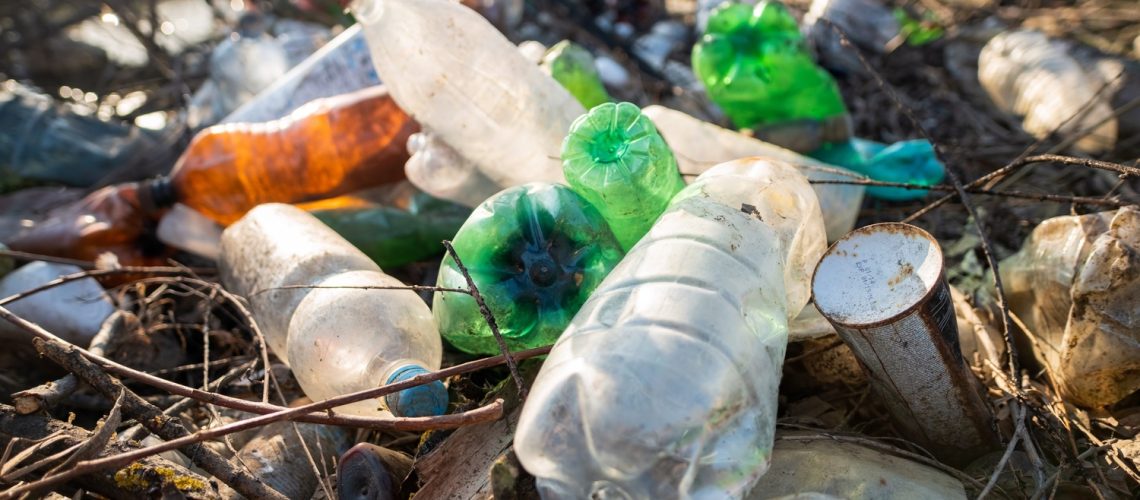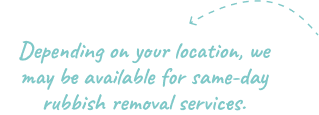Plastic bottle waste in Australia is a significant environmental issue due to its high volume production, low recycling rates, and severe environmental consequences.
This article will analyse the most recent statistics, trends, and initiatives to combat plastic pollution. It will help individuals and communities become more aware of the magnitude and urgency of the problem. At the same time, it will influence their attitudes and behaviours toward sustainable practices and foster support for effective policies and interventions.
The wide-ranging environmental repercussions include marine pollution, threats to biodiversity, and the long-term impact on natural ecosystems. Identifying emerging trends in plastic production or types and sources of plastics, such as beverage bottles and cigarette butts, can help to identify key intervention targets.
Aus Rubbish Removals is committed to recycling and responsible waste management throughout Australia. We specialise in eco-friendly waste removal solutions where attention is focused on the sustainable disposal of collected waste.
Our professional rubbish removalist team guarantees same-day rubbish collection. All waste is transported to certified recycling plants, and then sorted and treated products are disposed of in the most environmentally friendly way to eliminate the usage of landfills and improve recycling rates.
How Much Plastic Bottle Waste Does Australia Produce?
Australia contributes a lot of waste from plastic bottles each year. Its annual waste volume is about 373 million plastic water bottles. It leaves a significantly high number of water bottles either dumped in landfills or end up at environmental sites.
Australia’s Plastic Bottle Waste Percentage Breakdown
Recycled: In Australia, barely 36% of PET plastic drink bottles are recycled, while other plastic bottle types, such as HDPE, only have a recycling rate of 23% and LDPE an even lower at 9%. That indicates a little above one-third of the plastic bottles are processed through recycling systems.
Landfilled: Roughly 84% of plastic bottles, from PET to other types of plastics, end up being landfilled or otherwise not recycled. The most striking thing is that, although recycling is on the rise, it does not seem to have changed landfills as the dominant destination for plastic bottle waste.
Littered: Littered bottles do not have clear, fixed percentages quantifying them. However, they have great contributions among beach litter, park litter, and waterway litter across Australia. Approximately 600 million plastic bottles leak into the ocean each year, indicating a significant amount of bottle-related litter and pollution.
The figures below indicate that Australia has a very serious problem with plastics, where, at on average, every year about 130,000 tonnes enter the marine environment. By 2025, an estimated 99% of seabirds across the globe are expected to have ingested plastic.
Source: Clean Up Australia
In Australia, the consumption of plastics is expected to grow over twice as much as it did in previous years. Despite government policies to create a circular economy, only 14% of plastic waste is kept out of landfills.
Plastic recycling is incredibly expensive, inefficient, hazardous, and not many demand recycled plastics. Only about 15% of all plastics wasted over the last 20 years have been recovered through methods such as recycling, composting, or energy recovery.
Plastic Bottle Recycling Rates in Australia
PET (polyethylene terephthalate) plastic drink bottle recycling is about 36%. Although PET bottles are recycled best among plastic bottles, recycling rates for other types of plastic bottles are generally quite low. HDPE (high-density polyethylene) has a recycling rate of around 23%, while LDPE (low-density polyethylene) has a rate of about 9%.
Implementation Status
NSW, VIC, QLD: These states maintain active container deposit schemes (CDS) with known application dates: NSW since 2017, QLD since 2018, and VIC quite recently in 2023. The schemes are actively administered with multiple refund points and infrastructure available for container collection and recycling.
Tasmania is the only mainland state or territory without an operational CDS as of early 2025. However, the state intends to launch the scheme by mid-2025 to achieve national coverage.
Refund Value
NSW, VIC, QLD: All offer a standard 10-cent refund for each returnable container. This uniform refund promotes participation within the states, with QLD extending the scheme to now include spirit and wine bottles as of 2023.
Tasmania: This scheme has not started yet, so a refund system is not in place.
Eligible Containers
NSW: Refunds apply to drink containers of a size between 150ml and 3 litres carrying all possible types of beverages.
VIC: Other than this similarity, aluminium, glass, plastic, and liquid paperboard containers are eligible in the same size range.
QLD: As of November 2023, pure spirit bottles and wine are eligible in addition to other beverage containers.
Tasmania: The eligibility criteria are set to be determined once the scheme has come into effect.
Environmental Impact of Plastic Bottle Waste
Plastic debris primarily originates from land, with about 70% to 80% entering the oceans through rivers and waterways, often due to the mismanagement of solid waste. It’s stated that annually 1.15 to 2.41 million tonnes of plastic waste from rivers reaches the oceans and that this emission comes from over 1,000 rivers in the world by at least 74%.
Source: Australian Museum
Plastic pollution is devastating on a global scale to marine life, and the following statistics summarise the scale of the problem:
- It is estimated that over 1 million sea creatures, including mammals, fish, sharks, turtles, and birds, lose their lives each year because of marine debris.
- There are specifically about 100,000 marine mammals killed every year due to ingestion or entanglement with plastics.
- Also, nearly 1 million seabirds die of ingestion or entanglement every year, making them the largest section of affected animals.
- With plastic pollution affecting all seven species of sea turtles, about 50% of them worldwide are estimated to have consumed plastic at some point. These marine creatures mistook plastic bags for jellyfish, their natural prey.
Initiatives to Reduce Plastic Bottle Waste in Australia
There are schemes across all levels of government, community, and industry in Australia that seek to tackle plastic bottle waste through waste minimisation, recycling maximisation, and the circular economy.
NSW’s Return and Earn: By accomplishing a 52% reduction in litter of eligible containers by 2020, this deposit container scheme has managed to recycle materials equivalent to over 300,000 tonnes in weight.
Bans on Single-Use Plastics: All states and territories have agreed to phase out problematic single-use plastics over the period up to 2025. These include lightweight shopping bags, plastic straws, stirrers, and expanded polystyrene containers. This agreement reinforces concepts of plastic waste reduction, gaining strong public support along the way.
Container Deposit Schemes: This programme in NSW, QLD, WA, NT, ACT, and VIC and TAS will commence soon. They operate on a 10-cent refund for eligible beverage containers. Studies show these schemes reduce littering by 40 to 50% and generate very high levels of return and recycling.
Innovative Plastic Recycling Technologies
Developments in recycling technology have emerged in Australia for several materials. This has helped drive circular economy targets, increase waste recovery, and develop solutions for sustainability.
Chemical or Advanced Recycling: This technology converts waste polymers into their original monomers, oligomers, hydrocarbons, or valuable chemicals. It allows for new plastics and fuels to be freely produced. They alter the chemical structure through cracking, gasification, or depolymerisation processes, allowing recycling to go beyond the mechanical methods.
Mechanical Recycling: This common plastic recycling method collects, sorts, shreds, washes, and presses the materials into pellets without changing the polymers chemically. This method applies to polyethylene terephthalate (PET), high-density polyethylene (HDPE), and polypropylene (PP) items.
Endless Recycling through Enzymes: Australian firm Samsara Eco has created enzyme-based recycling technology that disassembles plastics into their original components (monomers), promoting limitless recycling.
Process of Chemicals into Fuels or New Plastics: New chemical processes enable plastics to be transformed into fuels and then recycled into plastics multiple times. It achieves a closed-loop recycling program.
Low-Energy Recycling Techniques: Scientists at UNSW have developed low-energy techniques for recycling plastics to achieve environmental care by the end of use in consumer packaging.
Soft Plastics Recycling: Investment in partnerships that aim to develop advanced specifications for chemical recycling of soft plastics has recently been established or expanded. It helps existing investments improve recovery and processing of these typically difficult materials.
How You Can Help Reduce Plastic Bottle Waste
Practical actions and lifestyle changes that help in minimising plastic pollution while supporting environmental sustainability can be undertaken to counteract plastic bottle waste.
Participate in Deposit Schemes: Where applicable, return bottles for the deposits from container deposit schemes. They help boost recycling rates, reduce litter, and earn you some cash.
Separate recyclables properly at home: Sort plastic bottles according to local recycling guidelines, ensuring they are free from contamination, before placing them in the recycling bin.
Go for reusable bottles: Select sturdy, safe, and easy-to-clean reusable water bottles made of glass, food-grade stainless steel, or BPA-free plastic. Say no to single-use bottled water by kindly refusing any offers of plastic bottles and giving an explanation for your refusal.
Aus Rubbish Removals provides efficient and eco-friendly rubbish collection services focused on reducing landfill waste and promoting recycling. Our services include the removal of household junk, garden waste, and other types of rubbish, with responsible disposal options that minimise visible environmental impact.
We provide an eco-friendly approach that prioritises local carbon footprint reduction through efficient waste handling and on-site sorting of recyclable materials for proper processing. We separate recyclable materials at the time of collection to support reprocessing rather than landfilling.
We service North Sydney, Manly, Mosman, Sydney CBD, Chatswood, Willoughby, and Hornsby. Call us at 0402 244 036 for your rubbish removal jobs, and our team of experienced professionals will be on your property in no time.
Frequently Asked Questions
1. How many plastic bottles are used in Australia each year?
Approximately 373 million plastic water bottles are used and disposed of in Australia each year.
2. What percentage of plastic bottles are recycled?
About 36% of polyethylene terephthalate (PET) drink bottles are recycled in Australia.
3. Which state has the best plastic recycling rates?
As of 2019, Victoria had the highest plastic recycling rate among the states in Australia, at about 16%.
4. Can all plastic drink bottles be recycled?
No. Not all plastic drink bottles can be recycled; primarily numbers 1 (PET), 2 (HDPE), and 5 (PP) are the commonly recycled types, while types 3 (PVC), 6 (PS), and 7 (other) usually cannot be recycled in the regular systems.
5. What happens to recycled plastic bottles in Australia?
Recycled bottles that are turned into new products in Australia have undergone multiple steps in a circular economy and minimise accumulation in landfills.



